Figuring out why some skin rashes turn deadly
Dermatologists at Ohio State pioneer research to create standards for diagnosing and treating severe and life-threatening rashes.
Sam de Silva broke out in itchy hives across her stomach, arms and legs.
Two days later, she spiked a high fever and had no appetite.
Hours after that, her rash was worse.
Her heart raced and her blood pressure dropped.
She made a trip to The Ohio State University Wexner Medical Center Emergency Department, where it was discovered her kidneys showed signs of shutting down.
“I didn’t understand what was happening,” says Sam, a 36-year-old mom. “My vision went into a sepia tone. It was very bizarre. I was panicking.”
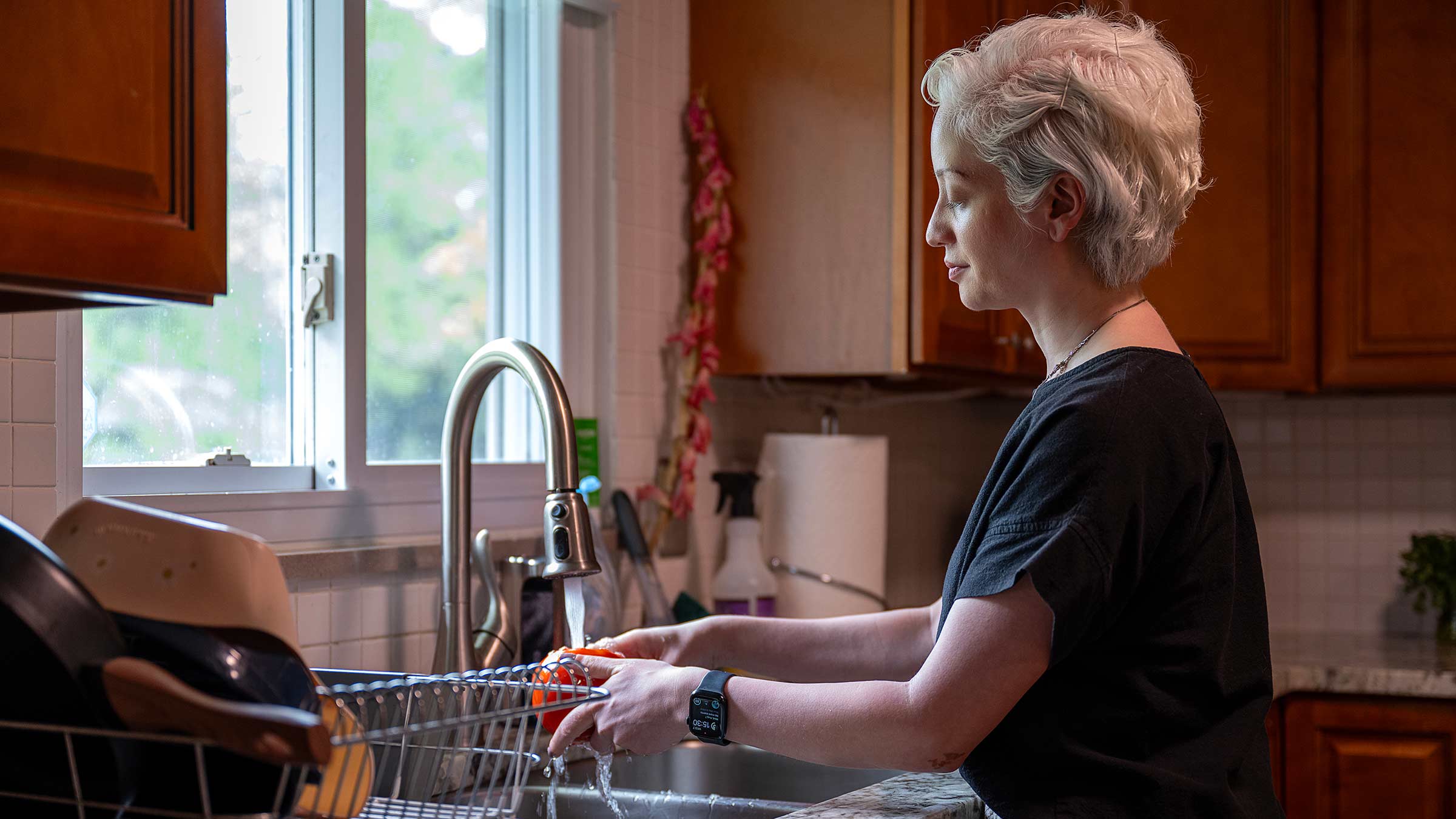
Part of Sam’s emergency team included an on-call dermatologist, Kristopher Fisher, MD, who was equipped with a scoring assessment created at the Ohio State Wexner Medical Center to determine the severity of the rash.
“Sam presented with a widespread rash, fever, eye changes and oral lesions. Her overall presentation was early, when medical intervention can be most helpful,” he says.
Sam was cautioned not to Google the condition and read about it online.
She remembers Dr. Fisher saying, “If you do, you’re not going to like what you see. But I think that we can act right now to make sure that it doesn’t get worse.”
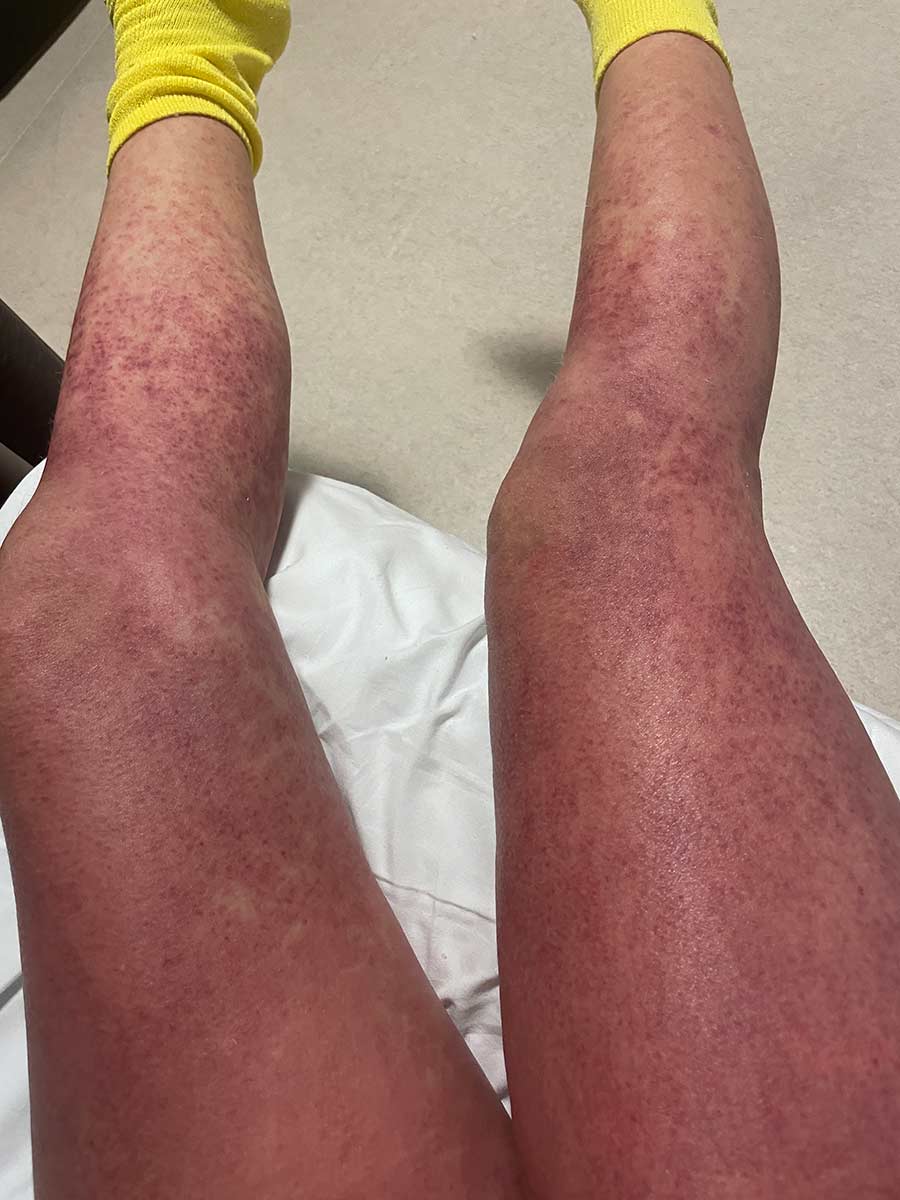 Sam’s rash was diagnosed as a rare condition known as Stevens–Johnson syndrome, likely caused by an allergic reaction to antibiotics she was taking for an ear infection. But it may have been intensified by her ongoing immunotherapy treatment for skin cancer. Dr. Fisher says Sam was concerned about the impact of any treatment on her ongoing clinical trial.
Sam’s rash was diagnosed as a rare condition known as Stevens–Johnson syndrome, likely caused by an allergic reaction to antibiotics she was taking for an ear infection. But it may have been intensified by her ongoing immunotherapy treatment for skin cancer. Dr. Fisher says Sam was concerned about the impact of any treatment on her ongoing clinical trial.
“After discussing the severity of this skin rash, we made the shared decision to start medications,” Dr. Fisher says.
Stevens–Johnson syndrome can be deadly if it’s not caught early.
“I continue to just be mind-blown by the multiple decisions that they had to make really quickly in order to make sure that it didn't get as bad as it could,” Sam says.
The assessments, like the one used to diagnose Sam, are just one area of research that the dermatology team at Ohio State, including Benjamin Kaffenberger, MD, and Abraham Korman, MD, is leading to diagnose and treat a variety of severe rashes that have made the Ohio State Wexner Medical Center a nationwide referral center for people suffering from rashes that can quickly turn deadly.

Tackling rare and deadly skin rashes
While many people will experience a rash in their lifetime, it’s unusual for it to take a turn and become a severe cutaneous adverse reaction (SCAR) like Sam de Silva experienced. There are three main rashes in this category: DRESS, AGEP and Stevens–Johnson syndrome. All three emerge with a profuse, measles-like rash triggered by a medication reaction. All three can lead to organ failure. The rarest and most deadly is Stevens–Johnson syndrome.
“We have treatments available, but they’ve never been proven in clinical trials to treat it,” Dr. Kaffenberger says. “That’s terrible if you think about it being the worst disease in our specialty. There is no strong evidence or consensus on best management strategy.”
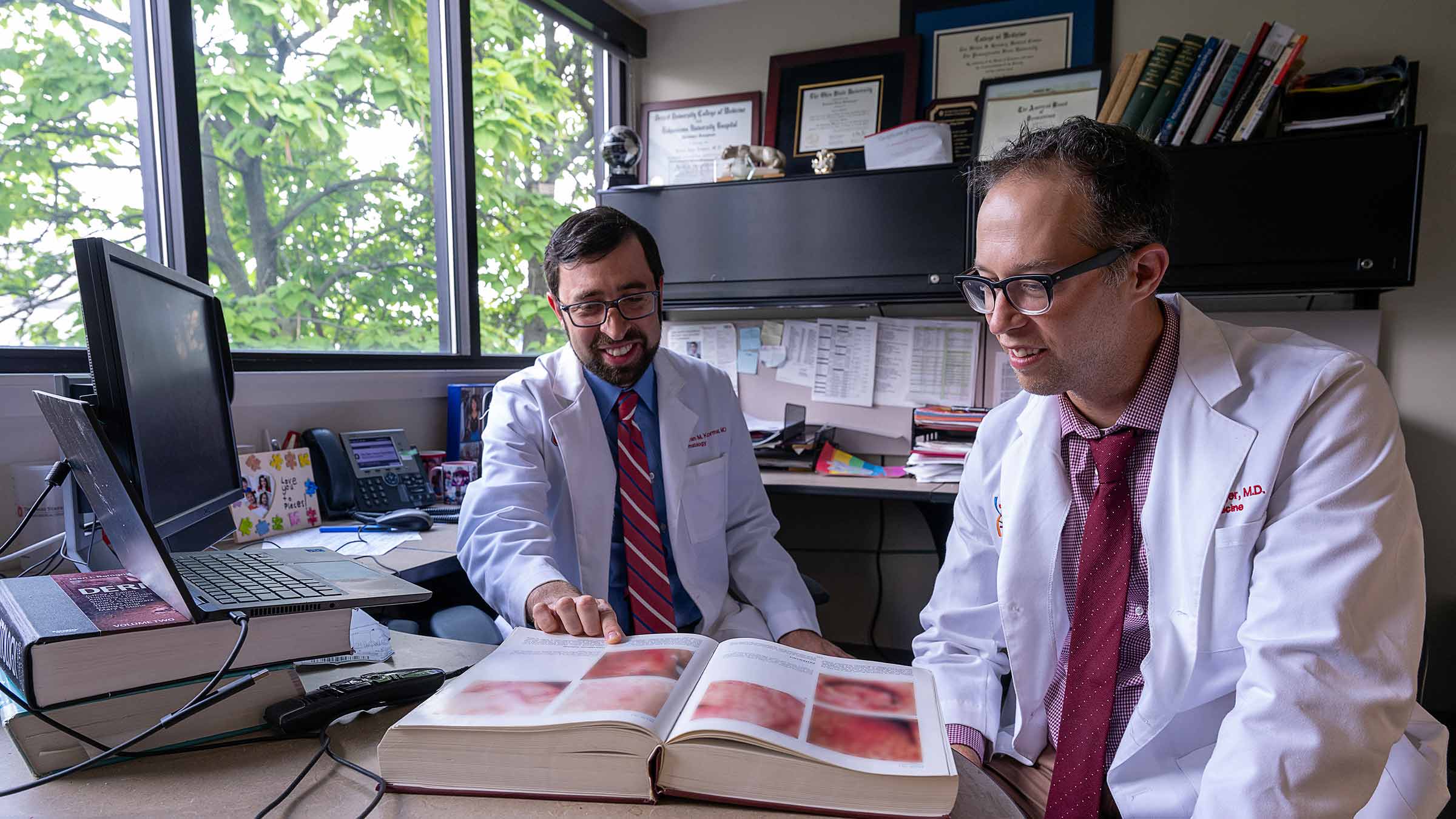
There are a number of challenges in treating severe rashes:
- They can be confused for more common rashes initially.
- There’s no uniform diagnostic scale to guide dermatologists when they encounter severe rashes, including a SCAR.
- There are no standard go-to medications, either off-label or U.S. Food and Drug Administration-approved drugs, among dermatologists across the country.
- Severe rashes are rare, which means the reactions are harder to study because there aren’t large numbers of people to study.
Despite the challenges, the team at Ohio State has worked to identify the precise features that differentiate the SCARs from low-risk rashes to aid in early and potentially life-saving diagnosis.
Unexpected side effects amid cancer breakthroughs
Many of these conditions are caused by drug reactions in patients.
About half of the patients seen by rash experts at the Ohio State Wexner Medical Center are patients with cancer.
“Many of the patients who have reactions have complex medical histories and are on multiple drugs. It can be difficult to figure out which drug caused the reaction,” Dr. Korman says.
The are many challenges. But determining the exact cause, or simply stopping problematic medications, isn’t that simple.
- Many of the patients who have reactions have complex medical histories and are on multiple drugs. It can be difficult to figure out which drug caused the reaction.
- Patients are sometimes on experimental drugs with little information on side effects because they’re still being documented.
“It’s not always the parent compound that patients are reacting to. You take a pill, and it gets broken down into several different chemical structures that are floating around, and it could be any one of those,” Dr. Kaffenberger says. “We don’t have any sort of tests available to distinguish what those are. So, we’re using the literature very regularly and looking at the frequency of different types of drug reactions.”
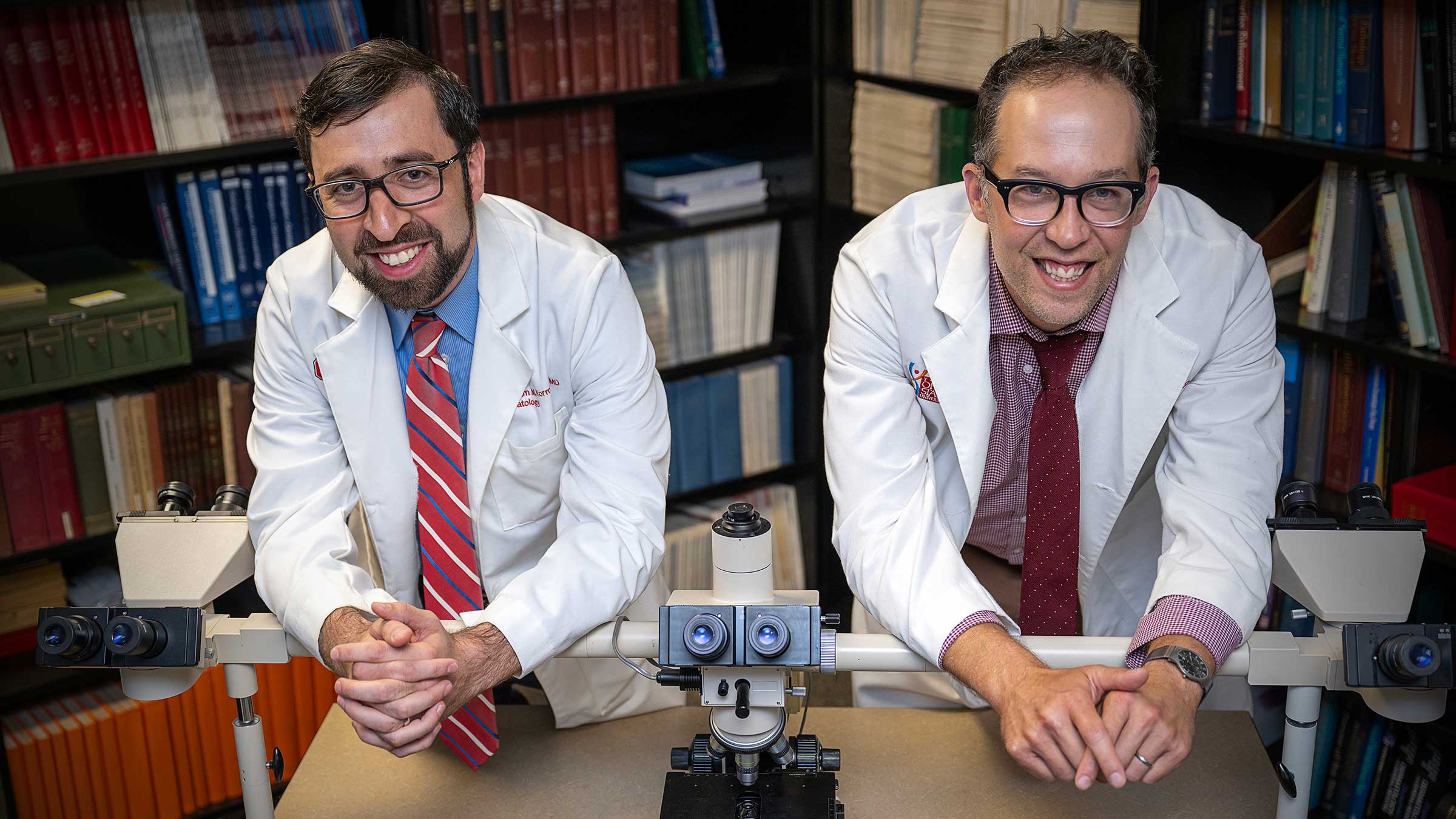
Catching Stevens–Johnson early means saving lives
Dermatologists at the Ohio State Wexner Medical Center see about 10 to 15 Stevens–Johnson cases per year. Nationally, numbers can vary between one and seven cases per million people each year.
If left untreated, the rash leads to blisters which cover the body and can even affect the eyes and mouth. Long-term eye complications and blindness are also common.
Those with severe cases sometimes end up in the burn unit for treatment.
“It’s a very high mortality. We’re one of the largest centers managing this. We manage a lot of these patients,” Dr. Korman says.
Because it's so rare, Stevens–Johnson syndrome presents a unique challenge for researchers.
“It’s 1 in 1,000. You have to look for subtle clues,” Dr. Kaffenberger says.
In Sam’s case, she was given a 65% chance of survival even with the reaction being caught early.
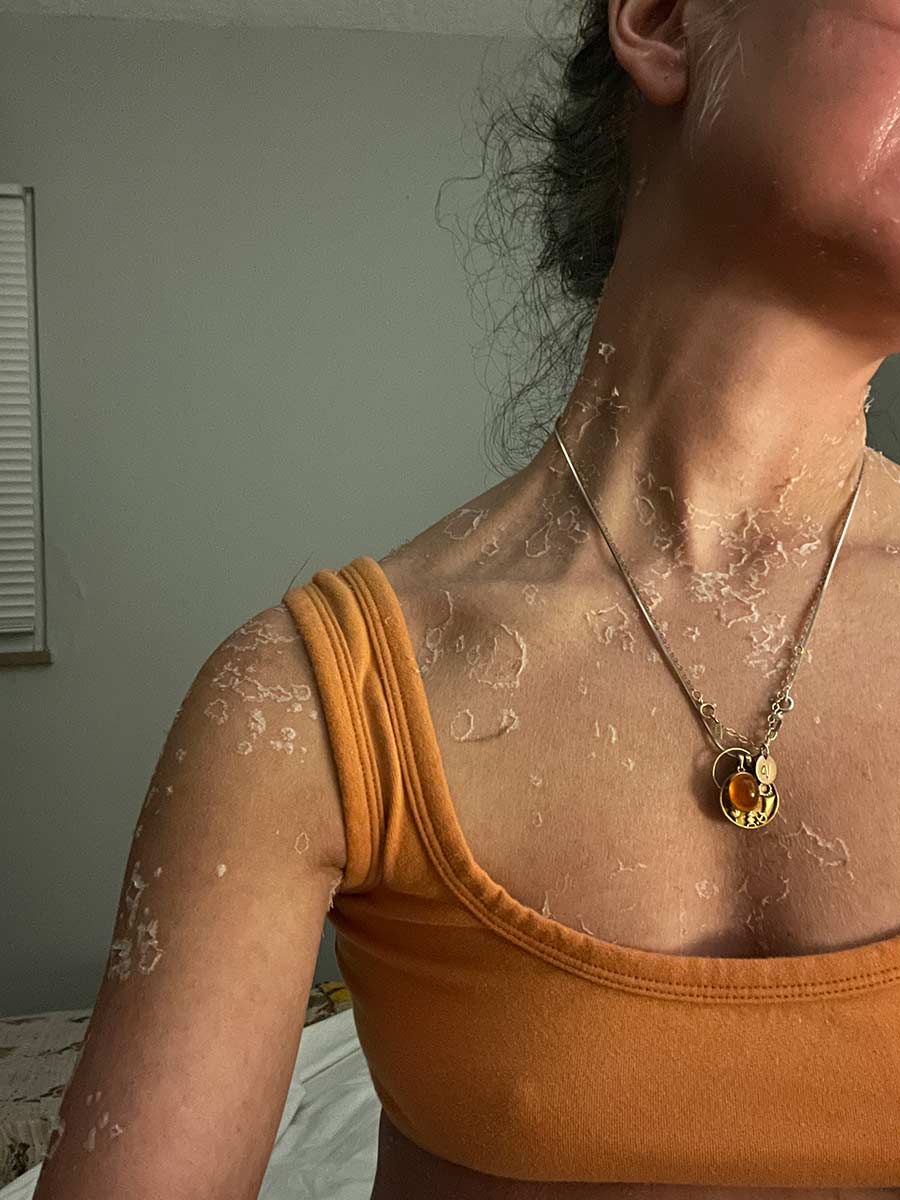
The rash was likely triggered by an antibiotic she was taking, but the reaction was particularly severe because Sam was also undergoing immunotherapy treatment as part of a clinical trial to treat stage 4 skin cancer.
Dr. Kaffenberger says that happens in some cases.
“There are cancer patients who may have tolerated an antibiotic their whole life and then, all of a sudden, they take immunotherapy infusions, and their immune system is much more primed and activated,” he says.
In Sam’s case, she says the skin all over her body hardened.
“Your skin can blister and fall off in sheets, almost. For me, it never got to that point. I’m so lucky,” Sam says. “I’m so grateful for the team.”
Because Sam’s case was caught early, she only shed the upper layer of her skin (the epidermis).
“I was leaving little, like, bits and particles of skin everywhere I went,” she says. “I just shed copious amounts of skin like a snake.”
Setting new standards for severe rash care
There’s no standard way to gauge the effectiveness of treatment for SCARs.
“How do you measure severity? How do you measure the impact on the patient's quality of life? What is the typical course of this patient’s skin disease as it changes throughout the hospitalization? There just hasn’t been any sort of work in in any of those areas for any of these severe reactions,” Dr. Kaffenberger says.
The assessments being developed at Ohio State help document the progression and diagnose the condition, measure outcomes and support additional research, including drug research.
Dr. Kaffenberger says better outcome measures are necessary to establish drug trials or determine a standardized effective treatment.
“There are no studies that have shown any medications have been superior to any other medications in this disease,” says Dr. Kaffenberger.
Without that severity scale, researchers can’t begin to do drug trials.
“We need drug company investments. But they're not interested in investing in this disease until we have tools to measure it,” Dr. Kaffenberger says.
He hopes assessment tools he and his team are developing can be created in the next few years. That would open the door for the FDA to potentially fast-track an effective medication.
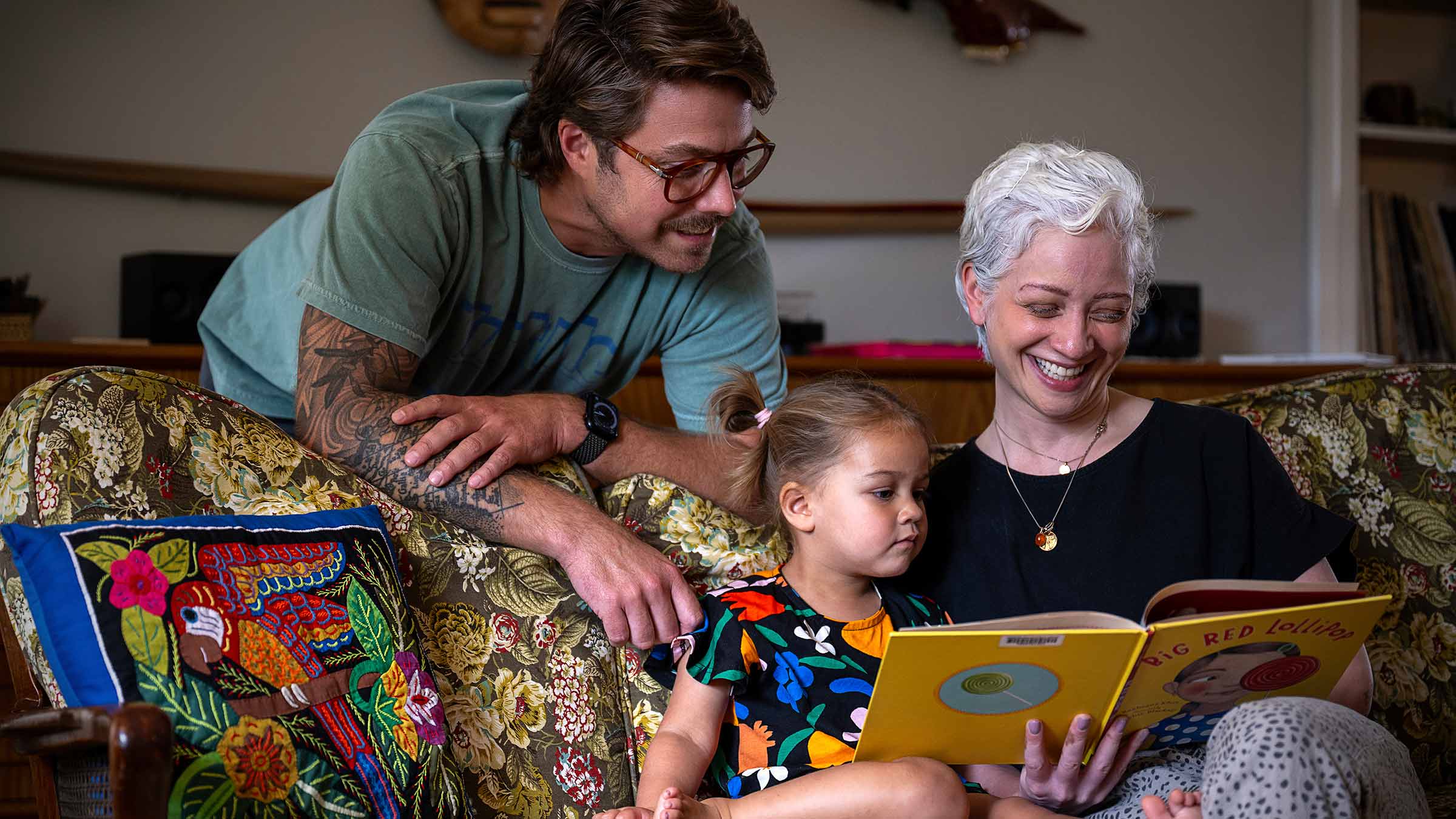
A path forward
Sam’s cancer hasn’t spread anymore, and no new rashes have appeared. Doctors, including dermatologists, continue monitoring her.
“I’ve essentially seen doctors for every part of my body in the last year. I think that the kind of wraparound support that I’ve been able to get at The James has been so impressive,” Sam says. “I have immense gratitude to the network of people who have taken care of me. I know it's grueling work, but for me it has been lifesaving.”

Worried about your skin?
Ohio State's dermatology team provides comprehensive care backed by one of the nation's leading academic health centers.
Expert care starts here



